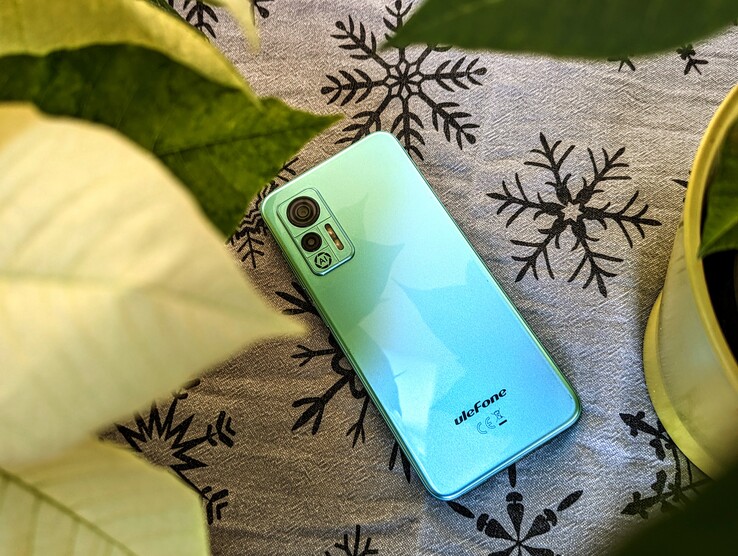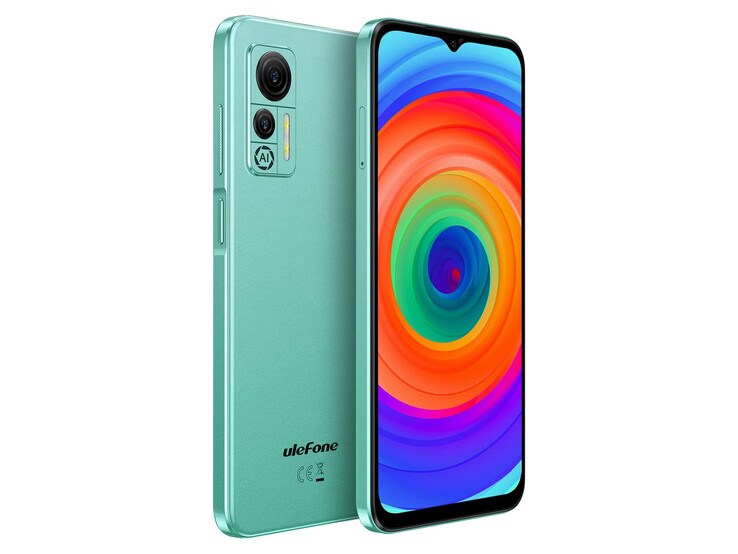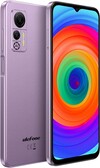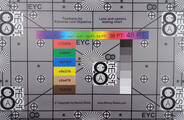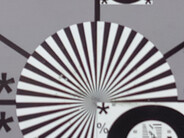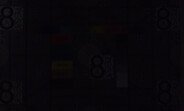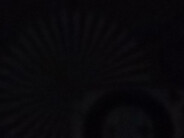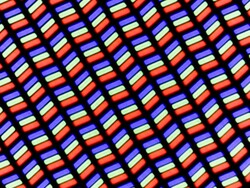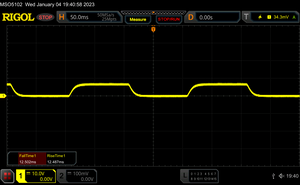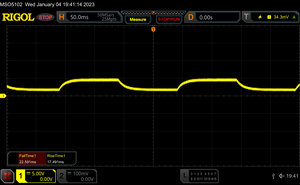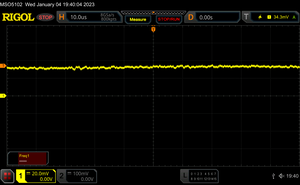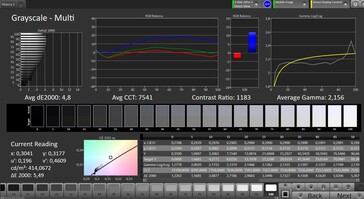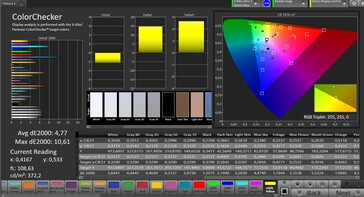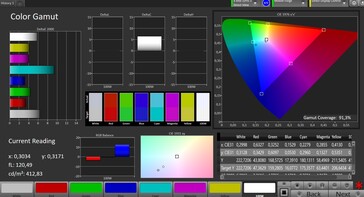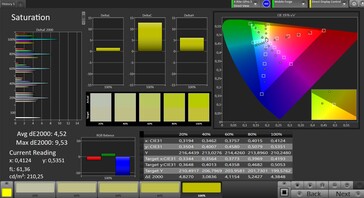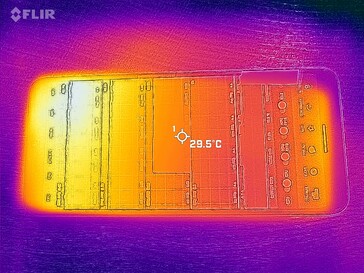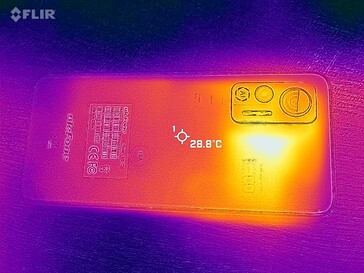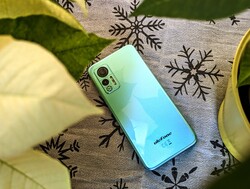Ulefone Note 14 smartphone review - What can the phone do for 100 Euros?
Possible competitors in comparison
rating | date | model | weight | drive | size | resolution | price from |
|---|---|---|---|---|---|---|---|
| 72.2 % | 01/2023 | Ulefone Note 14 Helio A22 MT6761, PowerVR GE8300 | 189 g | 64 GB eMMC Flash | 6.52" | 1600x720 | |
| 75.1 % | 09/2022 | Motorola Moto E32s Helio G37, PowerVR GE8320 | 185 g | 32 GB eMMC Flash | 6.50" | 1600x720 | |
| 74.3 % | 01/2020 | Nokia 2.3 Helio A22 MT6761, PowerVR GE8300 | 183 g | 32 GB eMMC Flash | 6.20" | 1520x720 | |
| 74.7 % | 10/2022 | Samsung Galaxy A04s Exynos 850, Mali-G52 MP1 | 195 g | 32 GB eMMC Flash | 6.50" | 1600x720 |
Case and equipment - Cheapest variant almost unusable
If you are looking for a cheap cell phone on large Internet platforms, you will soon stumble across providers like Ulefone, which is primarily known for outdoor cell phones. However, the manufacturer also offers inexpensive conventional smartphones in the Note series, for example the Ulefone Note 14, which is sometimes offered for just under 100 Euros (~$109).
However, we would not recommend the cheapest version of the phone: Then you have to make do with 16 GB of internal storage and 3 GB of RAM. Since Android 12 also needs its storage space, there is hardly any room left for pictures or additional apps. It is better to go for the version with 64 GB of storage, which also has 4 GB of RAM and costs almost 30 Euros (~$33) more from the manufacturer.
Although the internal storage can be expanded via a micro-SD card and the card reader performs well in our test with the reference card Angelbird V60 in terms of speed, not all data can be stored.
The Ulefone Note 14 comes with a simple plastic casing that is available in three colors: Lime green, dark gray and a delicate purple are available. The camera module is also nicely designed and the grooved volume rocker looks pretty. Some material transitions are noticeable, but the workmanship and stability are good in view of the phone's price range.
There is no NFC module, so mobile payment services cannot be used. It is also not possible to watch streams from Netflix or Prime Video in Full HD since a Widevine-L1 certification is missing.
| SD Card Reader - average JPG Copy Test (av. of 3 runs) | |
| Samsung Galaxy A04s (Angelbird V60) | |
| Average of class Smartphone (10.9 - 77, n=99, last 2 years) | |
| Ulefone Note 14 (Angelbird V60) | |
| Motorola Moto E32s (Angelbird V60) | |
Cross Platform Disk Test (CPDT)
Communication, software and operation - Reasonably up-to-date OS
The Ulefone comes with WiFi 5, so you can surf the web at a convincing speed. The data rates are also quite constant in our test with the reference router Asus ROG Rapture AXE11000.
You cannot expect modern 5G wireless in this price range, and LTE is also limited to very few bands. The important B20 band is available, so the phone can probably be used within the EU without any problems. However, mobile Internet is by no means guaranteed for more distant trips. In our random tests, the reception in the 4G network is a bit shaky and the signal strength is generally much lower than in high-end phones.
The Ulefone Note 14 comes with the fairly up-to-date Android 12, but it is not clear whether a newer version of the operating system will be available as an update. The manufacturer has at least been fairly reliable in terms of security patches so far and released an update in November 2022, which is still relatively up-to-date at the time of testing. The manufacturer installs some of its own apps, but we could not discover any third-party advertising apps.
Although the standby button looks like it has an integrated fingerprint sensor, the Note 14 disappoints here: You can only unlock it via facial recognition, which is relatively insecure without an infrared light and depth sensor. The touchscreen can be operated reliably, but it is not the fastest, also due to the 60 Hz panel.
| Networking | |
| iperf3 transmit AX12 | |
| Nokia 2.3 | |
| iperf3 receive AX12 | |
| Nokia 2.3 | |
| iperf3 transmit AXE11000 | |
| Ulefone Note 14 | |
| Samsung Galaxy A04s | |
| Motorola Moto E32s | |
| iperf3 receive AXE11000 | |
| Ulefone Note 14 | |
| Motorola Moto E32s | |
| Samsung Galaxy A04s | |
Cameras - Muddy Single Camera
Although two camera lenses show up on the back, one of them is only a depth sensor that is supposed to support the camera in portrait shots. Thus, pictures can actually be taken with only one camera.
It brings 13 megapixels as maximum resolution and takes quite dim photos with little details in our test. One could expect a bit more even in this price range, and the imaging performance is also correspondingly poor in low light.
Videos can be recorded with a maximum of 1080p and 30 fps. You should lower your expectations here as well: The autofocus pumps quite strongly before it finds the right setting and the brightness adjustment sometimes takes a bit longer.
There is a 5-megapixel selfie camera at the front. The photos look a bit bluish and are not well brightened either.
Image Comparison
Choose a scene and navigate within the first image. One click changes the position on touchscreens. One click on the zoomed-in image opens the original in a new window. The first image shows the scaled photograph of the test device.
Main camera FlowerMain camera EnvironmentMain camera Low Light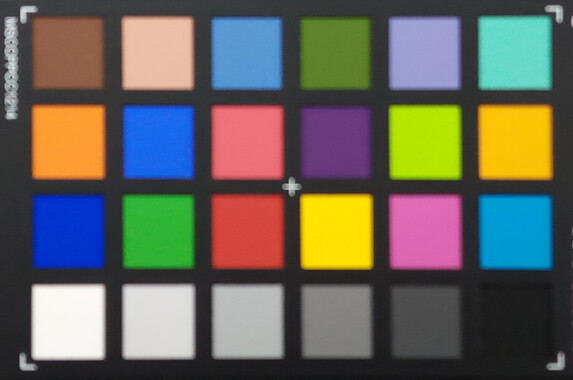
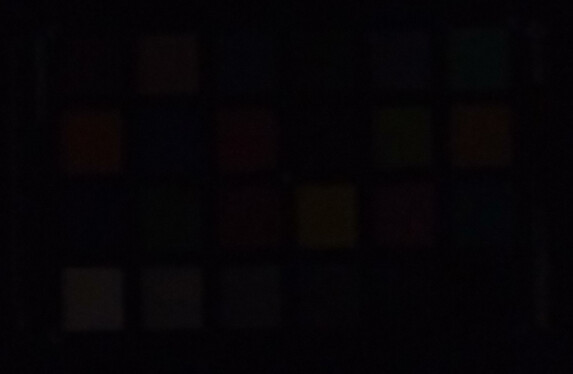
Display - Well suited for indoors
The IPS display with 1,600 x 720 pixels achieves a passable brightness of 379 cd/m² on average and is thus roughly on par with the Samsung Galaxy A04s. You can work indoors with it, but strong reflections appear on the screen outdoors on bright days, which often overlay the content.
The brightness distribution is somewhat uneven, so you can see slight differences in different areas of the screen even with the naked eye when looking closely. We also noticed a blue cast in the grayscale.
At least the display manages without PWM, even at very low brightness.
| |||||||||||||||||||||||||
Brightness Distribution: 83 %
Center on Battery: 419 cd/m²
Contrast: 1397:1 (Black: 0.3 cd/m²)
ΔE Color 4.77 | 0.5-29.43 Ø5
ΔE Greyscale 4.8 | 0.57-98 Ø5.3
91.3% sRGB (Calman 2D)
Gamma: 2.156
| Ulefone Note 14 IPS, 1600x720, 6.52 | Motorola Moto E32s IPS, 1600x720, 6.50 | Nokia 2.3 IPS, 1520x720, 6.20 | Samsung Galaxy A04s PLS, 1600x720, 6.50 | |
|---|---|---|---|---|
| Response Times | 17% | -13% | -26% | |
| Response Time Grey 50% / Grey 80% * | 40.1 ? | 30 ? 25% | 49.2 ? -23% | 48 ? -20% |
| Response Time Black / White * | 25 ? | 23 ? 8% | 25.6 ? -2% | 33 ? -32% |
| PWM Frequency | 7692 ? | |||
| Screen | -17% | 4% | 2% | |
| Brightness middle | 419 | 346 -17% | 515 23% | 426 2% |
| Brightness | 379 | 330 -13% | 488 29% | 390 3% |
| Brightness Distribution | 83 | 90 8% | 92 11% | 84 1% |
| Black Level * | 0.3 | 0.47 -57% | 0.23 23% | 0.33 -10% |
| Contrast | 1397 | 736 -47% | 2239 60% | 1291 -8% |
| Colorchecker dE 2000 * | 4.77 | 5.4 -13% | 6.1 -28% | 4.39 8% |
| Colorchecker dE 2000 max. * | 10.61 | 9 15% | 13.4 -26% | 7.97 25% |
| Greyscale dE 2000 * | 4.8 | 5.5 -15% | 7.7 -60% | 5.1 -6% |
| Gamma | 2.156 102% | 2.874 77% | 2.26 97% | 2.184 101% |
| CCT | 7541 86% | 5971 109% | 8639 75% | 7985 81% |
| Total Average (Program / Settings) | 0% /
-11% | -5% /
1% | -12% /
-4% |
* ... smaller is better
Display Response Times
| ↔ Response Time Black to White | ||
|---|---|---|
| 25 ms ... rise ↗ and fall ↘ combined | ↗ 12.5 ms rise | |
| ↘ 12.5 ms fall | ||
| The screen shows relatively slow response rates in our tests and may be too slow for gamers. In comparison, all tested devices range from 0.1 (minimum) to 240 (maximum) ms. » 53 % of all devices are better. This means that the measured response time is worse than the average of all tested devices (21.5 ms). | ||
| ↔ Response Time 50% Grey to 80% Grey | ||
| 40.1 ms ... rise ↗ and fall ↘ combined | ↗ 22.6 ms rise | |
| ↘ 17.5 ms fall | ||
| The screen shows slow response rates in our tests and will be unsatisfactory for gamers. In comparison, all tested devices range from 0.2 (minimum) to 636 (maximum) ms. » 58 % of all devices are better. This means that the measured response time is worse than the average of all tested devices (33.7 ms). | ||
Screen Flickering / PWM (Pulse-Width Modulation)
| Screen flickering / PWM not detected | |||
In comparison: 53 % of all tested devices do not use PWM to dim the display. If PWM was detected, an average of 17900 (minimum: 5 - maximum: 3846000) Hz was measured. | |||
Performance, emissions and battery life - hardly any reserves
With the Helio A22 Ulefone has used an already 4-year-old SoC that hardly has any performance reserves for everyday use. The animations in the menu are jerky from time to time, and you can only adjust the volume or switch between apps with a long delay during more complex activities.
It is difficult for the Ulefone Note 14 to keep up with similarly priced devices from other manufacturers in terms of performance, so you only get the most necessary performance for activities like calling and messaging. The eMMC storage is also quite slow, so copying processes and loading times drag on.
At least there is hardly any noticeable heating on the case.
The mono speaker is usable, but sounds very treble-heavy and muffled. There is a 3.5 mm jack and Bluetooth 5.0 for external audio devices. aptX and aptX HD as well as SBC, AAC and LDAC are available as Bluetooth codecs.
With a battery capacity of 4,500 mAh, the Ulefone Note 14 offers slightly less than, for example, the Galaxy A04s or the Motorola Moto E32s. This is also noticeable in the runtimes, whereby 14:43 hours in our WLAN test still speak for 1-2 days of runtime with moderate use. However, charging with only 5 watts of power takes a very long time: Even over 3 hours until the battery is full is quite possible depending on the battery state before charging.
| PCMark for Android - Work 3.0 | |
| Average of class Smartphone (4761 - 21385, n=215, last 2 years) | |
| Motorola Moto E32s | |
| Samsung Galaxy A04s | |
| Ulefone Note 14 | |
| Average Mediatek Helio A22 MT6761 (4766 - 4888, n=2) | |
| GFXBench | |
| on screen Aztec Ruins Normal Tier Onscreen | |
| Average of class Smartphone (3.6 - 123, n=227, last 2 years) | |
| Samsung Galaxy A04s | |
| Motorola Moto E32s | |
| Average Mediatek Helio A22 MT6761 (2.3 - 6.1, n=14) | |
| Ulefone Note 14 | |
| Nokia 2.3 | |
| 1920x1080 Aztec Ruins Normal Tier Offscreen | |
| Average of class Smartphone (2.3 - 229, n=227, last 2 years) | |
| Samsung Galaxy A04s | |
| Motorola Moto E32s | |
| Average Mediatek Helio A22 MT6761 (1.9 - 4.2, n=14) | |
| Ulefone Note 14 | |
| Nokia 2.3 | |
| on screen Aztec Ruins High Tier Onscreen | |
| Average of class Smartphone (2.8 - 119, n=227, last 2 years) | |
| Samsung Galaxy A04s | |
| Motorola Moto E32s | |
| Average Mediatek Helio A22 MT6761 (2.7 - 3.9, n=14) | |
| Nokia 2.3 | |
| Ulefone Note 14 | |
| 2560x1440 Aztec Ruins High Tier Offscreen | |
| Average of class Smartphone (0.85 - 94, n=227, last 2 years) | |
| Samsung Galaxy A04s | |
| Motorola Moto E32s | |
| Ulefone Note 14 | |
| Nokia 2.3 | |
| Average Mediatek Helio A22 MT6761 (0.7 - 0.9, n=14) | |
| Octane V2 - Total Score | |
| Average of class Smartphone (2228 - 89112, n=214, last 2 years) | |
| Samsung Galaxy A04s | |
| Ulefone Note 14 | |
| Average Mediatek Helio A22 MT6761 (3920 - 5041, n=8) | |
| Ulefone Note 14 | Motorola Moto E32s | Nokia 2.3 | Samsung Galaxy A04s | Average 64 GB eMMC Flash | Average of class Smartphone | |
|---|---|---|---|---|---|---|
| AndroBench 3-5 | 43% | 30% | 78% | 32% | 798% | |
| Sequential Read 256KB | 294 | 248.6 -15% | 261.8 -11% | 302.4 3% | 273 ? -7% | 1508 ? 413% |
| Sequential Write 256KB | 208 | 184.3 -11% | 149.2 -28% | 83.3 -60% | 176.8 ? -15% | 1118 ? 438% |
| Random Read 4KB | 55 | 49.1 -11% | 69.6 27% | 62.7 14% | 59.1 ? 7% | 247 ? 349% |
| Random Write 4KB | 13 | 40 208% | 30.33 133% | 58.9 353% | 31.7 ? 144% | 272 ? 1992% |
Temperature
(+) The maximum temperature on the upper side is 35 °C / 95 F, compared to the average of 35 °C / 95 F, ranging from 21.9 to 56 °C for the class Smartphone.
(+) The bottom heats up to a maximum of 38.8 °C / 102 F, compared to the average of 33.8 °C / 93 F
(+) In idle usage, the average temperature for the upper side is 21.8 °C / 71 F, compared to the device average of 32.7 °C / 91 F.
Speaker
Ulefone Note 14 audio analysis
(±) | speaker loudness is average but good (79.9 dB)
Bass 100 - 315 Hz
(-) | nearly no bass - on average 34.6% lower than median
(±) | linearity of bass is average (10% delta to prev. frequency)
Mids 400 - 2000 Hz
(±) | higher mids - on average 9.2% higher than median
(±) | linearity of mids is average (12.3% delta to prev. frequency)
Highs 2 - 16 kHz
(±) | higher highs - on average 6.6% higher than median
(+) | highs are linear (6.7% delta to prev. frequency)
Overall 100 - 16.000 Hz
(-) | overall sound is not linear (38.5% difference to median)
Compared to same class
» 84% of all tested devices in this class were better, 1% similar, 16% worse
» The best had a delta of 12%, average was 38%, worst was 134%
Compared to all devices tested
» 94% of all tested devices were better, 1% similar, 6% worse
» The best had a delta of 4%, average was 25%, worst was 134%
Samsung Galaxy A04s audio analysis
(±) | speaker loudness is average but good (78.4 dB)
Bass 100 - 315 Hz
(-) | nearly no bass - on average 26.8% lower than median
(±) | linearity of bass is average (11.6% delta to prev. frequency)
Mids 400 - 2000 Hz
(±) | higher mids - on average 8.2% higher than median
(±) | linearity of mids is average (7.9% delta to prev. frequency)
Highs 2 - 16 kHz
(+) | balanced highs - only 4.8% away from median
(±) | linearity of highs is average (8% delta to prev. frequency)
Overall 100 - 16.000 Hz
(±) | linearity of overall sound is average (26.4% difference to median)
Compared to same class
» 62% of all tested devices in this class were better, 6% similar, 32% worse
» The best had a delta of 12%, average was 38%, worst was 134%
Compared to all devices tested
» 78% of all tested devices were better, 4% similar, 18% worse
» The best had a delta of 4%, average was 25%, worst was 134%
Battery life
| Battery Runtime - WiFi Websurfing | |
| Samsung Galaxy A04s | |
| Motorola Moto E32s | |
| Nokia 2.3 | |
| Average of class Smartphone (424 - 2844, n=229, last 2 years) | |
| Ulefone Note 14 | |
Pros
Cons
Verdict - Pretty, but hardly any inner values
You currently invest a maximum of 130 Euros (~$141) for the Ulefone Note 14 and get a very chic phone that can also bring color into everyday life if desired. However, the inner values are not on the same level as the quite pretty exterior: The camera takes washed-out and rather gloomy photos, the processor is only fast enough for basic tasks, and you will search for NFC in vain.
The runtimes are practical and the screen is bright enough for indoor use. The manufacturer has also been quite reliable with its security updates at intervals of several months up to the time of testing, and there is quite a good equipment with Bluetooth codecs. In addition, there is a fairly comprehensive accessories package with a bumper, stick-on phone stand and charger in the box.
However, a fingerprint sensor is missing and the phone only offers lame memory. If you can live with the limitations and are simply looking for a cheap phone, you can give the Ulefone Note 14 a chance. We would not recommend the 16 GB storage variant; it is no longer up to date.
The Ulefone Note 14 is an inexpensive, very simple smartphone with an attractive exterior. However, you should also consider the alternatives in the price range in view of the scarce features.
You will have to accept compromises in this price range, whereas a Samsung Galaxy A04s has a much faster SoC, a slightly better camera, NFC and a 90 Hz screen for hardly more money. The Motorola Moto E32s also has a 90 Hz screen and offers longer runtimes.
Price and availability
The Ulefone Note 14 can be purchased directly from the manufacturer at https://www.ulefone.com/note-14-p1521.html although the shipping costs are quite high.
The small 16 GB storage variant is also available for just under 100 Euros (~$109) at amazon.de, as is the 64 GB model, which costs approximately 110 Euros (~$119) at amazon.de.
Ulefone Note 14
-
01/14/2023 v7
Florian Schmitt


 Deutsch
Deutsch English
English Español
Español Français
Français Italiano
Italiano Nederlands
Nederlands Polski
Polski Português
Português Русский
Русский Türkçe
Türkçe Svenska
Svenska Chinese
Chinese Magyar
Magyar